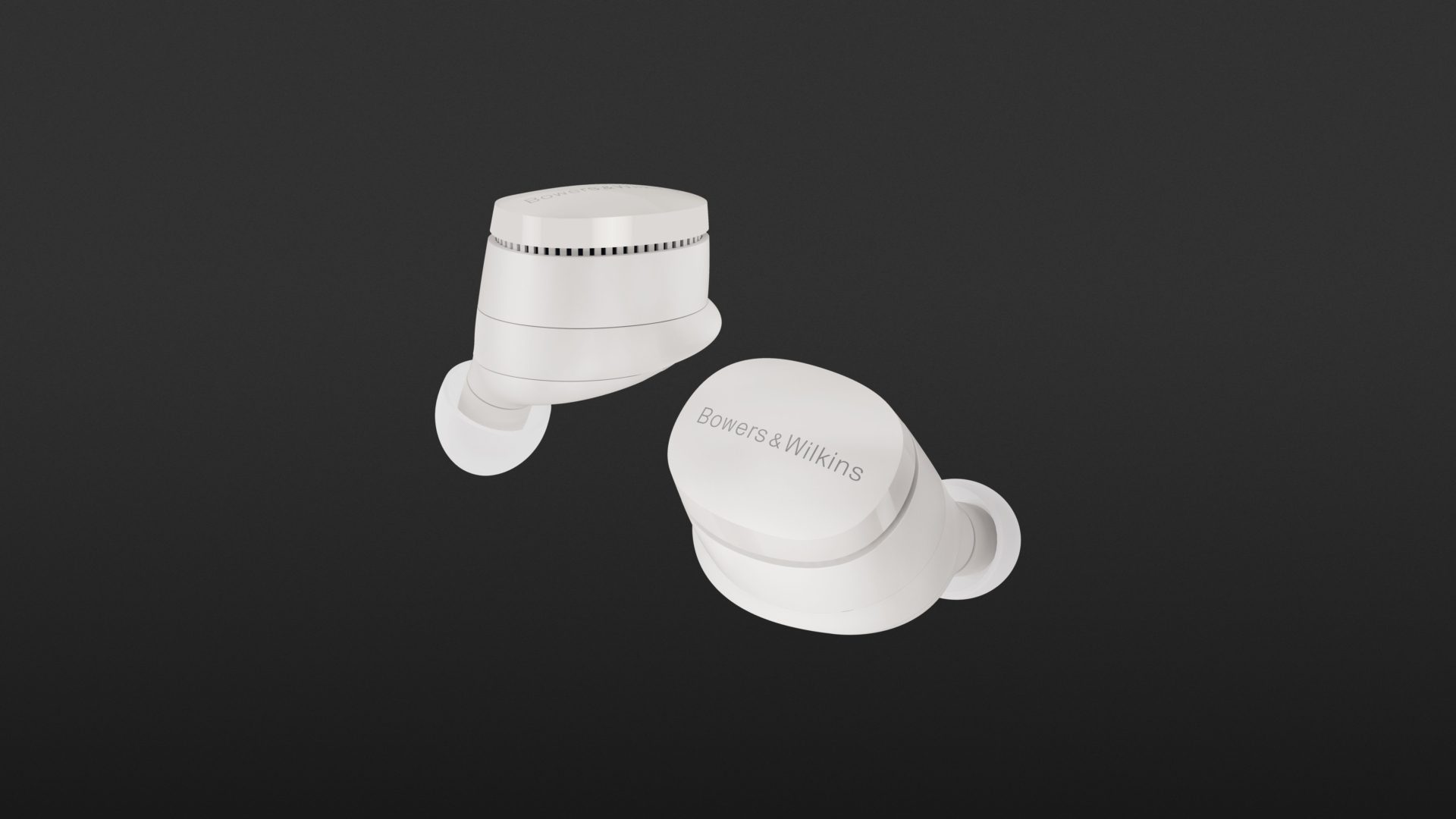The Bowers & Wilkins Pi6 are very good-sounding in-ears that can easily compete with the Pi8, which cost €150 more. If you don’t mind the lack of a charging case, lossless audio codecs and a feature-rich app, you’ll get great sound, effective noise cancellation and battery life for everyday use.
- Very good sound
- Good noise cancellation
- Multipoint
- 8 hours battery life
- Limited in-app options
- ANC and volume cannot be controlled simultaneously
- No Dolby Atmos
TFrom now on, the Pi6 offers a more affordable way to enjoy the sound of the renowned English hi-fi manufacturer. The top-of-the-range model, the Bowers & Wilkins Pi8, which we recently rated ‘2+’, is aimed at the premium segment at €400. However, you will have to make a few concessions with the Pi6, which is reduced by €150 – and also pay attention to competitors in the mid-priced range, because the midfield is well occupied at €250.
Table of Contents
Pastel colours and a new shape
Available in four colours, the Pi6 comes in a case of the same colour, slightly lighter than its big brother, the Pi8 (review). The IP54-rated headphones can withstand dust and moisture, making them suitable for indoor and outdoor use in (almost) any weather. The case itself should be kept dry, however, as the manufacturer does not specify a protection class for it.
As with the Pi8, I was impressed by the new fit, which feels good when you put the headphones in. The tilt of the bar-shaped Pi6 in the ear indicates the correct fit. Four pairs of silicone ear tips are included. For me, the XL tips provided a good seal with a comfortable fit.
Bowers & Wilkins Pi6 Vs Pi8 – the differences
On the plus side, the Pi6 has a longer battery life of 8 hours (with ANC on and without recharging via the case) because Bowers & Wilkins has reduced the number of power-consuming components or made them more compact. The DSP is 24-bit, compared to 32-bit on the Pi8, and instead of aptX Lossless, the smaller unit only has aptX Adaptive or Classic.
The Pi6’s 12mm drivers are made from biocellulose, a fairly new material that is stiffer than conventional materials and is said to allow for more detailed audio transmission. The Pi8 also has 12mm drivers, but they are made from carbon fibre.
Both in-ears are multi-point capable. The Pi6s cannot be charged by induction (wirelessly via Qi) like the Pi8s, but the charger case is a little lighter because there is no magnet. Also, wireless audio through the case using a USB-C cable or from analogue sources is not available on the smaller model.
Bowers & Wilkins Pi8
Very good sounding True Wireless in-ears with effective, adaptive ANC
App with limited functionality
The clean Bowers & Wilkins app communicates with the Pi6 in an even more streamlined version. For example, it lacks a charge indicator and, disappointingly, the EQ only allows you to adjust bass and treble (rather than the five bands on the Pi8).
The touch controls are also rudimentary. You can either access ANC and the voice assistant, or tap and hold either side to increase or decrease the volume. You can also integrate most paid-for radio stations and streaming services, although this will require customising the app. Bowers & Wilkins have always been tight-lipped when it comes to app support, and their ‘little ones’ are almost Spartan in their approach. For those who like to fine-tune their headphone settings, there’s nothing beyond ‘on’, ‘off’ and ‘change environment’.
Excellent noise cancellation
With Adaptive Noise Cancelling, the DSP adapts the circuitry to the ambient noise level, ensuring very good attenuation of external noise up to a certain level. The Pi6 cuts out office chatter and quiet conversations, as well as the sound of the city through an open window. When it gets a bit louder, you need a strong signal (music) to cover the noise. Even with the Pi6s set up as well as possible, ANC in-ears are not as good at blocking noise as over-ears due to their design. During our testing period, however, I was able to manage most everyday situations with ease thanks to the ANC and a transparent mode that also worked well. Like the Pi8, they sound a bit ‘telephone-like’ when switched on, but this helped with speech intelligibility.
Noise-Canceling Headphones: What should I look for when buying them?
If you travel a lot or want to concentrate on your work in an open-plan office, you should take a closer look at noise-canceling headphones.
The sound is pleasing
When it comes to sound, the Pi8’s big brother comes into play, because the two almost identical sounding protagonists allow you to hear the subtle differences, which in my opinion are so marginal that they are not the main reason for the purchase decision.
Both models reproduce the pleasant Bowers & Wilkins texture very well. I repeated the listening test of the Pi8 with the Pi6 under the same conditions via Bluetooth using a MacBook and listened to both models in direct comparison. Using AAC, the technical conditions were the same and the differences in the electronic tracks were marginal. On ‘Strobe’ by deadmau5, the Pi8’s reverb was a little more detailed than the Pi6’s, and the classical tests showed a little less silkiness in the Pi6’s strings than in the Pi8.
Playing the high-resolution files offered by Qobuz in the Bowers & Wilkins Music app, the Pi6 showed its full potential. Although the Pi6 does not interpret immersive audio formats such as Dolby Atmos, the Pi6s are in the premier league in terms of sound. Speech intelligibility during voice and video calls was very good on both the sending and receiving end.
The bottom line
With the Pi6, Bowers & Wilkins offers a very good-sounding pair of true wireless in-ears that can easily keep up with the Pi8, which costs €150 more. If you don’t need audio transmitted through a charging cradle, don’t need lossless audio codecs in your earphones and can cope with the Spartan app, the Pi6s are excellent sounding in-ears. Good noise cancelling in the in-ear section in the front seats and a handy battery life of 8 hours plus a further 16 hours per case qualify the Pi6s for everyday use.
Technical specifications
- Ear couplingIn-ear
- Typeclosed
- Transducer principledynamic
- Weight without cable7 g each, case 45 g g
- Cable length60 cm
What's in the box
- Ear tips XS/S/M/L
- USB-C to USB-C charging cable
Special features
- available in Cloud Grey, Forest Green, Glacier Blue and Storm Grey
- BT version: 5.4
- BT codecs: SBC, AAC, aptX Adaptive, aptX Classic




















































Hi there,
I am considering the Pi6’s for my everyday earbuds but reading about the touch controls leaves me in doubt. So I asked Bowers and Wilkins through the pi6 homepage if there will be a firmware update to allow for full customisation of the touch controls, including the possibility to control BOTH volume AND ANC/heartrough/off on the earbuds themselves…
The answer was that “There has been an update that was pushed out on October 26 that offers the ability to customize the touch controls to your liking. This has resolved the issue that you were reading about in regards to the touch controls.”
Could you please confirm these new customisation options?
We are sorry, we cannot confirm this yet. In our test scenario the app does not suggest a new firmware. Still running V1.01.